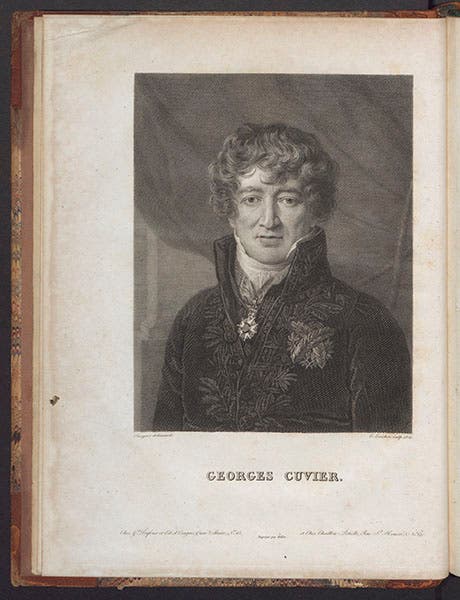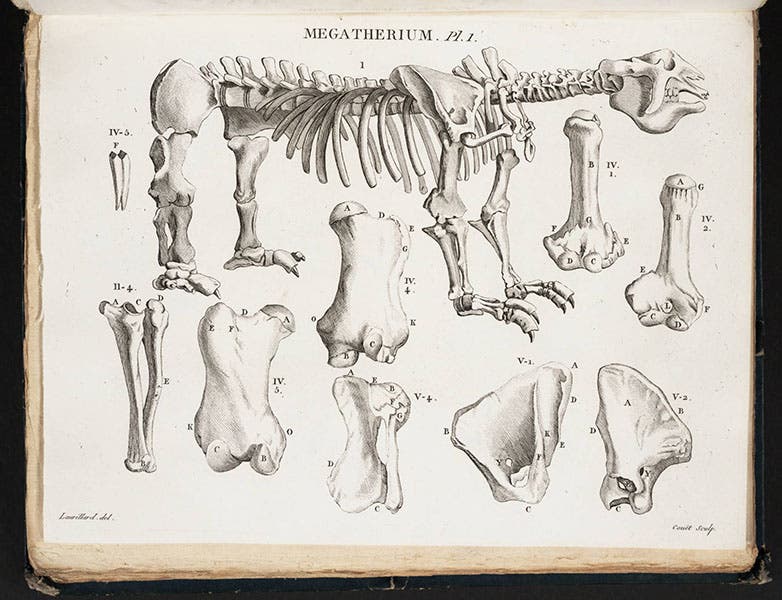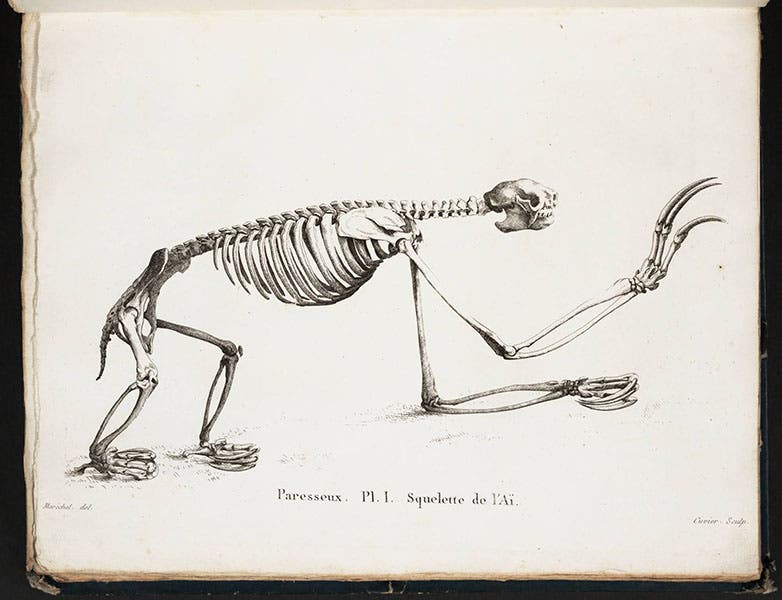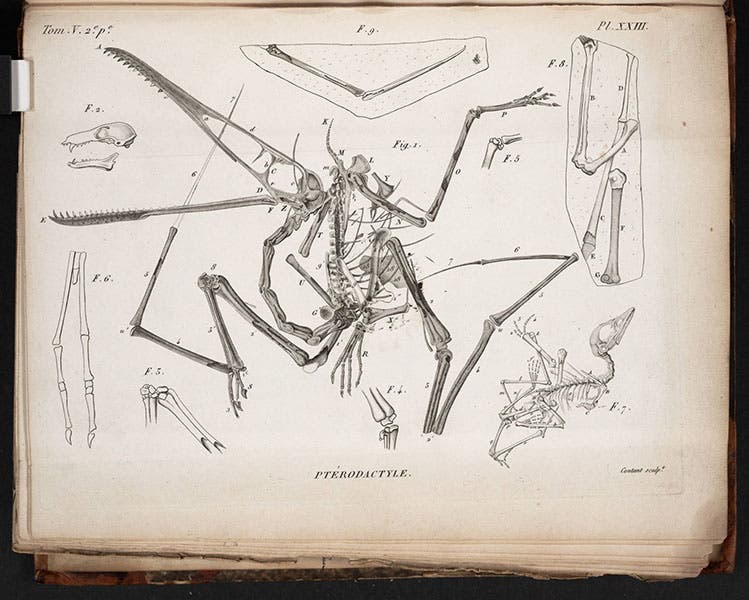Scientist of the Day - Georges Cuvier
Georges Cuvier, a French zoologist and anatomist, was born Aug. 23, 1769. Cuvier worked and taught at the Museum of Natural History in Paris, and he was one of the first to apply knowledge of comparative anatomy to the fledgling field of vertebrate paleontology in order to reconstruct extinct animals from their fossils. It is interesting that the argument that comparative anatomy is a useful adjunct to natural history, the study of living animals, was first made in Paris in the 1660s by Claude Perrault and his fellow Academicians, so it was fitting that another member of the Academy (now the National Institute) should have extended that same insight into the past. Cuvier first demonstrated that the mastodon and mammoth, recently recovered from sites along the Ohio River and from Russia, were not elephants but rather extinct forms of elephant-like mammals (first image). He argued that the Megatherium was a giant ground sloth (third image), coming to that conclusion by comparing the fossil remains to those of a living sloth (fourth image)
Cuvier further demonstrated that the pterodactyl was a flying reptile (fifth image), and that the celebrated “Maastricht animal”, which he called a mosasaur, was an extinct marine reptile. In the process, Cuvier demonstrated the reality of extinction, which before Cuvier was an often contested notion.
Cuvier's studies on fossil mammals were published over the course of some years in the Annals of the Institute, and then collected together in four volumes and published in 1812 as Recherches sur les ossemens fossils (Researches on fossil bones). This work really marks the beginning of vertebrate paleontology. Our copy is especially nice because it preserves its original pasteboard covers. Cuvier enlarged the work several times; the edition of 1821-24 is expanded to 6 volumes and includes such new specimens as the ichthyosaurus and plesiosaurus (sixth image), discovered recently by Mary Anning in England. Our image of the pterodactyl is taken from this second edition, because he first names it there; in the first edition, he simply calls it “reptile volant”. We have a copy of this second edition also, as well as an 1836 posthumous octavo fourth edition in many volumes. I guess we need to acquire the third edition to complete our set.
One might think that the man who showed that the earth of the past contained quite different animals from the present-day earth might have been inclined to think in terms of transmutation, but Cuvier was not. In fact, he was quite adamantly opposed to the evolutionary theory proposed by his colleague, Jean Baptiste Lamarck. Cuvier believed that the organs and bones of an animal were so finely attuned that they could not be altered in any way beneficial to the animal. Cuvier preferred to believe that the earth had been swept clean of life numerous times by catastrophic geological revolutions, with each repopulation unrelated to the one that preceded it.
Cuvier died in 1830, the year before Charles Darwin departed on HMS Beagle. He was buried in Père Lachaise cemetery in Paris, where you may find the tombs of many great French scientists. Our portrait is the frontispiece to his Discours sur les revolutions de la surface du globe (1826), which is essentially the introduction to the Researchs on Fossil Bones, published separately and reprinted many times as a popular introduction to his ideas of progressionism, the replacement of earlier animal forms by revolution rather than evolution.
We displayed yet another plate from the Recherches, showing Cuvier’s proof that Johann Scheuchzer’s “human witness of the Flood” was in fact a giant salamander, in our 2009 exhibition, The Grandeur of Life, where you can also see the original 1812 engraving of the pterodactyl. Dr. William B. Ashworth, Jr., Consultant for the History of Science, Linda Hall Library and Associate Professor, Department of History, University of Missouri-Kansas City. Comments or corrections are welcome; please direct to ashworthw@umkc.edu.










![Columbine, hand-colored woodcut, [Gart der Gesundheit], printed by Peter Schoeffer, Mainz, chap. 162, 1485 (Linda Hall Library)](https://assets-us-01.kc-usercontent.com:443/9dd25524-761a-000d-d79f-86a5086d4774/3829b99e-a030-4a36-8bdd-27295454c30c/gart1.jpg?w=210&h=210&auto=format&fit=crop)
